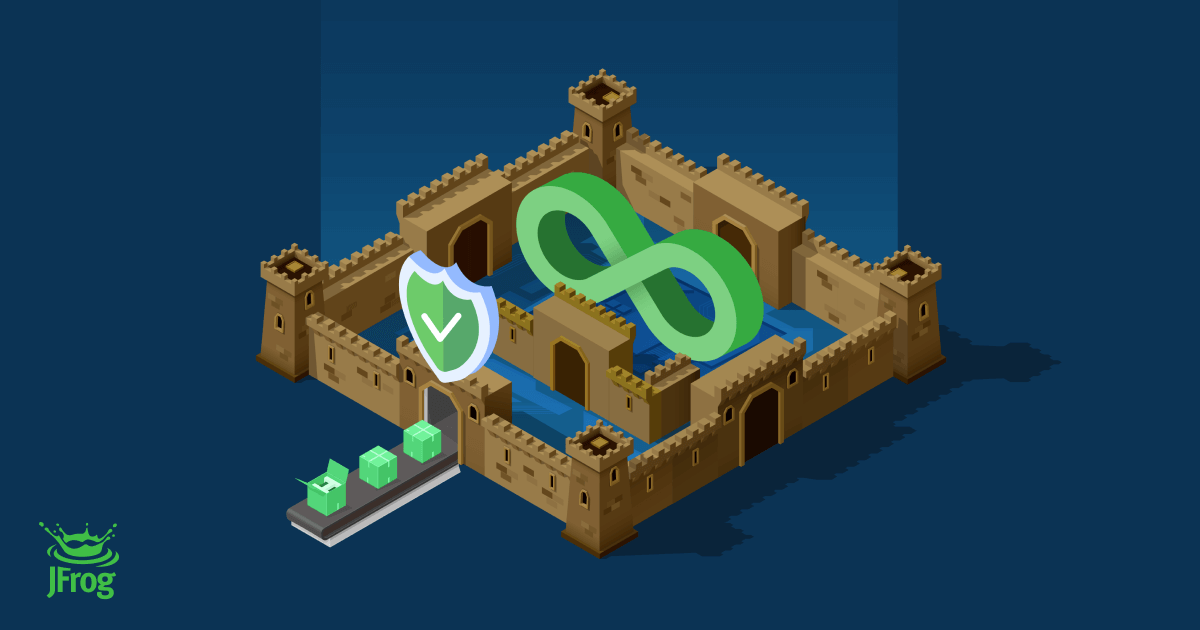Definition
Microservices security refers to the practices, tools, and strategies used to protect distributed applications built with a microservices architecture. Unlike monolithic applications, where security controls are centralized, microservices require a decentralized approach that secures each service, its communication channels, and its dependencies.
Overview
Microservices differ from traditional monolithic architectures. A monolithic approach centralizes application logic, making development and deployment simpler in the early stages. However, as a system scales quickly, monoliths often accumulate technical debt, making updates and scaling more complex.
What are Microservices?
Microservices consist of smaller, independently deployed services that communicate via APIs to form a complete application. Microservices architecture offers a range of benefits to developers. These include:
Modularity: Each individual service within a microservices structure operates independently and performs a single function. This is known as the single responsibility principle. The roles of each service are clearly defined, and no two services perform the same function. This also reduces the risk of major disruptions since developers can update or replace specific components without affecting the entire system.
Decentralized management: Data storage in a microservices architecture is more flexible than in a monolithic architecture. Each service can manage its own database or share it with one or more other services. This minimizes the risk of errors and allows for more autonomy and flexibility for each data set.
Scalability: Microservices integrate well with containerized infrastructure, making them highly portable and scalable. Additionally, changes to a single service won’t affect other services in this architecture, so services can be scaled as needed without overloading the entire system.
Agility: This approach allows multiple teams to develop, test, and deploy different parts of a distributed system in parallel, improving agility and efficiency. Developers can also select the best technology stack for each service, optimizing performance and flexibility.
What is microservices security?
The flexibility that makes microservices powerful also expands the attack surface, increasing the risk of unauthorized access, data breaches, and service disruptions. Unlike monolithic applications, which allow for centralized security controls, microservices rely on a distributed security model, making it more complex to secure individual components and their interactions.
Microservices security best practices
Securing a microservices architecture requires integrating security into development while maintaining workflow efficiency. Here are some best practices to follow.
Implement secure coding and deployment practices
Sticking to secure coding standards is essential to prevent vulnerabilities such as injection attacks, insecure deserialization, and sensitive data exposure. Incorporating both Static Application Security Testing (SAST) and Dynamic Application Security Testing (DAST) into the development lifecycle can help identify and mitigate potential security issues early. SAST analyzes source code for vulnerabilities during development, while DAST tests running applications for security flaws.
A critical aspect of secure coding in microservices is proper secrets management. Storing secrets improperly—such as embedding them in source code—creates a major security risk, even in private repositories. Instead, secrets should be stored in environment variables or dedicated secret management tools such as HashiCorp Vault.
Securing containers is essential to protecting microservices in production, ensuring that applications run in a controlled and resilient environment. Image scanning should be integrated into CI/CD pipelines to detect vulnerabilities before deployment, while runtime security monitoring helps identify anomalous behavior in active containers. Containers should follow least privilege principles, running with only the permissions necessary to function, and should be isolated to prevent unauthorized access between services. Implementing network policies, immutable infrastructure, and automated security updates further reduces risks, ensuring that microservices remain protected from evolving threats.
Secure communication channels between microservices and with external services
Protecting data in transit between microservices is crucial. Implementing Transport Layer Security (TLS) ensures encrypted communication, safeguarding against eavesdropping and tampering. For enhanced security, Mutual TLS (mTLS) can be employed, which requires both client and server to authenticate each other using certificates, thereby preventing unauthorized access and man-in-the-middle attacks.
Additionally, organizations should avoid exposing internal microservices to the public internet. API gateways act as intermediaries, handling requests securely while enforcing authentication and rate-limiting policies to prevent abuse.
API gateways can also prevent abuse and service disruptions by rate limiting and throttling. By capping the number of requests from a single client or IP address, they help mitigate denial-of-service (DoS) attacks and prevent any one service from being overwhelmed. This approach ensures fair resource distribution, maintains system stability, and protects the overall performance of microservices.
Handle authentication and authorization in a distributed system
One of the most complex challenges in securing microservices is managing authentication and authorization. With a monolithic system, user authentication is often handled by a single authentication service. In a microservices environment, however, multiple services may need to verify identities, making it crucial to implement a centralized authentication solution.
Using OAuth 2.0 for authorization and OpenID Connect (OIDC) for authentication, organizations can establish a single sign-on (SSO) mechanism that authenticates users once and issues secure JSON Web Tokens (JWTs). These tokens allow services to verify authentication without repeated credential checks, reducing authentication overhead in a distributed system.
API gateways enforce authentication and access policies at entry points by validating tokens and directing authenticated requests to microservices. By implementing role-based access control (RBAC) or attribute-based access control (ABAC) alongside custom access policies, organizations can restrict users and services to only the resources and actions permitted by their roles or attributes. This minimizes unauthorized access and strengthens overall security by applying consistent enforcement of permissions across all microservices.
Continuous security testing and monitoring
Security in a microservices architecture requires ongoing testing and real-time monitoring to detect vulnerabilities before they can be exploited. Traditional security techniques, such as penetration testing and vulnerability scanning, can be adapted to account for the distributed nature of microservices. Collecting automated security testing into CI/CD pipelines ensures that vulnerabilities are identified and remediated early in the development cycle, reducing risks before deployment.
Beyond proactive testing, effective monitoring and logging play a crucial role in identifying potential security threats in real time. Centralized logging and monitoring solutions provide visibility across all microservices, allowing teams to track abnormal behavior, detect potential breaches, and respond to security incidents swiftly. Implementing threat detection mechanisms, including intrusion detection systems (IDS), security event monitoring, and automated incident response, enhances an organization’s ability to contain and mitigate attacks.
Challenges in microservices security
Following the best practices will certainly help with managing security in microservices, but it’s not without its challenges. Here are some things to be mindful of.
Managing security across multiple microservices
In a microservices environment, each service operates independently, often with its own codebase, runtime environment, and database. This independence complicates the implementation of consistent security measures across all services. Ensuring that each microservice adheres to the organization’s security policies requires coordination and oversight. Without a centralized security framework, there’s a risk of inconsistent security practices, leading to potential vulnerabilities.
Ensuring consistency and compliance in security measures
Additionally, maintaining uniform security standards across diverse microservices is challenging. Each service may be developed using different technologies and frameworks, making it difficult to enforce consistent security protocols. Achieving compliance with industry regulations and standards requires a comprehensive approach to ensure that all microservices meet the required security criteria. This involves regular audits, standardized security practices, and continuous monitoring to uphold compliance.
Monitoring and detecting security incidents in real-time
Finally, the distributed nature of microservices can obscure visibility into system operations, making it challenging to monitor and detect security incidents promptly. Implementing effective logging and monitoring across all services is essential to identify and respond to threats in real-time. However, aggregating and analyzing logs from multiple microservices can be complex and resource-intensive. Advanced monitoring solutions and centralized logging are necessary to provide a holistic view of the system’s security posture.
Future trends and innovations in microservices security
As microservices environments continue to scale, traditional security measures must evolve to address increasingly sophisticated threats. Emerging security innovations are focusing on automation, intelligence-driven detection, and adaptive protection strategies.
Emerging technologies and approaches for improved microservices security
The future of microservices security will be defined by automation, intelligence-driven threat detection, and adaptive security models. As microservices architectures become more complex, traditional perimeter-based security approaches are no longer sufficient. Instead, organizations are shifting towards Zero Trust Security, ensuring that every request, user, and service is continuously verified before access is granted.
The role of automation and machine learning in securing microservices
AI-driven security automation will play a crucial role in identifying vulnerabilities, detecting anomalies, and responding to threats in real time. Machine learning algorithms will enhance behavioral analysis, allowing security systems to predict and prevent attacks before they escalate. Automated policy enforcement and security orchestration will ensure that security configurations remain consistent across distributed environments, reducing manual errors and misconfigurations.
API security will also continue to evolve, with greater adoption of automated API discovery, AI-powered threat detection, and advanced rate-limiting mechanisms to protect against API abuse, credential stuffing, and DDoS attacks.
Integrated software supply chain security
Additionally, secure software supply chains will be a growing priority, with more organizations leveraging integrated security scanning, provenance tracking, and cryptographic signing to verify the integrity of their microservices components.
By combining AI-driven automation, Zero Trust frameworks, and continuous monitoring, organizations can secure microservices environments without compromising agility or performance.
Microservices security isn’t a one-size-fits-all solution—it requires a combination of best practices, and constant monitoring. JFrog’s security solutions provide end-to-end protection, ensuring that software artifacts, containerized applications, and running services remain secure, compliant, and resilient against evolving threats.
By integrating security into every stage of the microservices lifecycle, organizations can innovate with confidence—without compromising security.
Securing your microservices with JFrog
JFrog provides comprehensive security solutions designed to protect software artifacts, detect vulnerabilities, and enforce compliance across microservices architectures. By integrating security directly into the development lifecycle, JFrog helps organizations build secure microservices from the ground up.
JFrog Advanced Security includes the full range of security tools, covering open-source software (OSS) curation, software composition analysis (SCA), software bill of materials (SBOM), container security, contextual analysis, secrets detection, infrastructure as-code (IaC) security, misconfigurations, static application security testing (SAST), and more. For more information, take a virtual tour or set up a one-on-one demo at your convenience.







